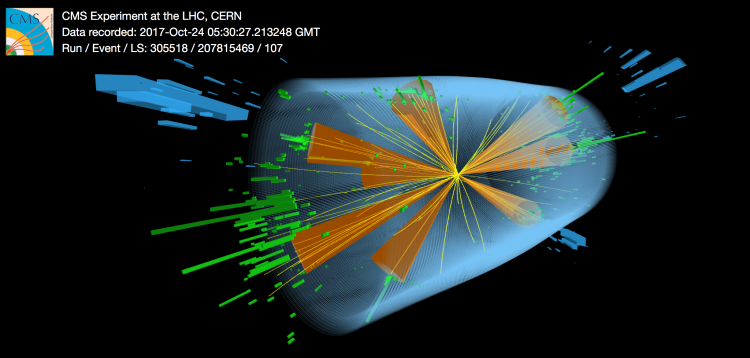Top and bottom quarks - spotlight on the higgs boson
The CMS collaboration has recently released new results on how the top quark and Higgs boson interact, and this required a much deeper understanding of the production of top quarks together with bottom quarks.

The two heaviest known elementary particles, the top (t) quark and the Higgs (H) boson, are deeply connected. They provide an essential probe of the Standard Model (SM) of particle physics, our best attempt so far at describing the fundamental particles and their interaction, and of hypothetical new physics beyond the SM. In the SM, the strength of the interaction between the Higgs boson and matter particles (quarks and leptons) is proportional to their mass. Since the top quark is the heaviest of all particles, the interaction between the Higgs boson and top quarks is also the strongest. As a result of that top-Higgs interaction, Higgs bosons can be produced in association with top quark pairs (this is called the ttH process and was first confirmed in 2018). Measuring the rate at which this rare process happens in the collisions between protons at the LHC, i.e. the probability that a given collision results in the simultaneous production of a top quark pair and a Higgs boson, is the most direct way to study the top-Higgs interaction. In turn, this tells us a lot about the nature of the Higgs boson and helps us answer questions such as: is the Higgs boson actually elementary? Are there other kinds of Higgs bosons out there? Is the universe stable?
The analysis was carried out in the UZH group of Florencia Canelli by the PhD students (Vinicius Mikuni and Korbinian Schweiger) and the postdoc (Sebastien Wertz)